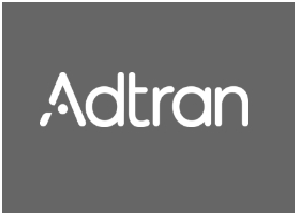Trump's tariffs could slow the pace of cable network upgrades
President Trump's sweeping tariffs have caused analysts and other market-watchers to get a fix on what they might mean for specific industries. Uncertainty abounds as it's not yet clear precisely how they will be implemented and how carve-outs on elements such as semiconductors might change the outcome. But some analysts are starting to weigh in.
New Street Research's Jonathan Chaplin explored the potential impact of the new tariffs across the wireless and wireline broadband industries in a research note issued today (April 4). On the wireless side, he believes AT&T, Verizon and T-Mobile could see capital spending rise by about 7% as a result of the tariffs, which include a 10% baseline tariff on all goods coming to the US and higher tariffs on products from specific countries and regions such as China and the European union.
Turning to cable, Chaplin acknowledges that it is difficult to forecast network upgrade capital because he doesn't have an exact fix on the mix of foreign and domestic suppliers for various components.
But he does assume that two-thirds is tied to equipment, with two-thirds of that portion being imported, driving a 9% increase in that part of the budget. His expectation is that the tariffs are likely to have a slowing effect on network upgrade projects. He notes that network upgrades account for 12% of total capex at charter Communications, 23% at Comcast and 4% at Altice USA.
A slower upgrade pace would represent another dose of tough news for cable tech suppliers that have been banking on cable network upgrade activity to perk up as operators put DOCSIS 4.0 on their roadmaps.
Canada-based Vecima Networks has already been weighing the risks of tariffs, noting recently that about half of its sales into the US could be exposed. Vecima has already moved some manufacturing to the US to support the Broadband Equity Access and Deployment (BEAD) program.
Though cable tech suppliers could be negatively impacted, cable operators are among the "best positioned" to navigate the tariffs, KeyBanc Capital Markets analyst Brandon Nispel explained in a research note issued today. "For the Cable operators, we believe their Broadband services are critical, especially when paired with a Mobile service that is provided at a discount," he added.
Fiber deployment costs expected to rise
On the fiber front, New Street's Chaplin expects deployment costs to rise, even if the split between domestic and foreign equipment is not crystal clear and may differ from one operator to the next.
Related:Trump tax could raise 5G equipment costs by 7%, analysts calculateHe anticipates the cost-to-pass to rise 2% – going from around $1,200 to $1,225. The cost-to-connect is seen rising 2% – from $700 to $715. Other related equipment would drive a 5% increase, he reckons.
As it is with hybrid fiber/coax (HFC) upgrade activity, Chaplin also sees a deployment slowdown on the horizon for operators (a group that also includes cable operators) that are deploying fiber.
Ahead of this week's tariff announcements, PwC estimated that the technology, media and telecommunications (TMT) sector could see tariff totals balloon from $13 billion to $139 billion.
Dallas Dolen, who runs PwC's tech, media and telco program, said that number will now go higher – and perhaps double – based on the details issued this week. But it's still too early to get a precise determination until potential carve-outs for elements such as semiconductors are factored in.
Dolen said few anticipated the rollout of reciprocal tariffs when initial forecasts were being computed.
"The impact is much more dynamic ... and the potential impact is huge," Dolen said. "You're going to see largely an emotive reaction at first ... The level of uncertainty is incredibly high."





